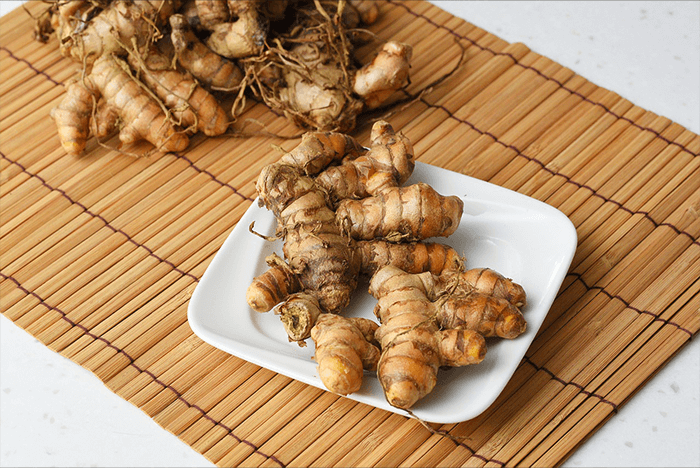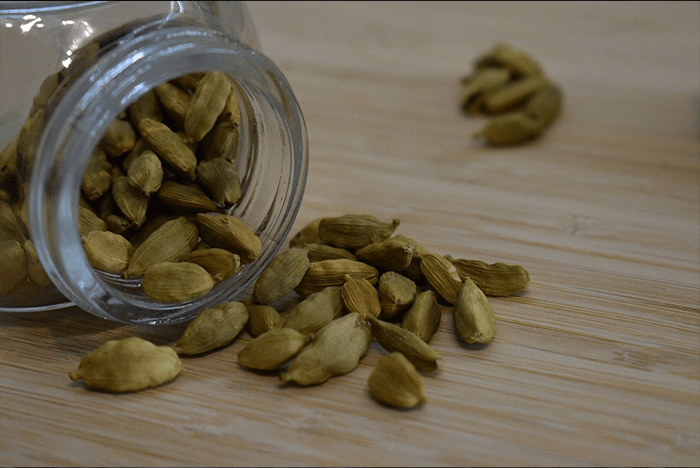Description:
Turmeric (Curcuma longa) is a flowering plant in the ginger family, Zingiberaceae, native to Southeast Asia, primarily India. The plant’s rhizome, or underground stem, is commonly used as a spice, particularly in powdered form. It is known for its distinctive bright yellow-orange color and earthy, slightly bitter taste.
Turmeric has been used for thousands of years in cooking, particularly in South Asian cuisine, and is also known for its medicinal properties, primarily due to the active compound curcumin, which has anti-inflammatory and antioxidant effects.
Video Source: Here
Common Features:
- Plant Appearance: Turmeric plants grow to a height of 1 meter (3 feet) with large, broad leaves and funnel-shaped yellow flowers. The rhizomes (roots) are harvested for their culinary and medicinal uses.
- Rhizome Characteristics: The turmeric rhizome is tuberous, with a tough brown skin and deep orange flesh. When dried and powdered, it becomes the spice commonly known as turmeric.
- Flavor and Aroma: Turmeric has a warm, bitter, peppery flavor with a mustard-like aroma. The pungency is due to the presence of essential oils, including turmerone.
Role in the Ecosystem:
- Soil Enrichment: Turmeric cultivation helps improve soil quality by preventing erosion, particularly in tropical regions. The plant’s extensive root system holds the soil together, reducing degradation.
- Pollinator Support: The bright yellow flowers of the turmeric plant attract various pollinators such as bees, which aid in cross-pollination, promoting biodiversity in the ecosystem.
- Medicinal Plant in the Ecosystem: Turmeric has been a vital component of traditional medicine systems, such as Ayurveda and Traditional Chinese Medicine, and its use in natural treatments helps reduce dependence on synthetic pharmaceuticals, promoting ecological health.
- Carbon Sequestration: As a perennial plant, turmeric contributes to carbon sequestration, absorbing carbon dioxide and storing it in the plant’s biomass and soil, helping mitigate climate change.
Importance:
- Culinary Use:
- Spice and Colorant: Turmeric is a key ingredient in many South Asian, Middle Eastern, and Southeast Asian cuisines. It is used in curries, soups, rice dishes, and even beverages like golden milk. The spice imparts a rich yellow color to food.
- Preservative: In traditional cooking, turmeric has been used as a natural preservative due to its antimicrobial properties, which help inhibit the growth of harmful bacteria.
- Medicinal Use:
- Anti-Inflammatory: Curcumin, the active compound in turmeric, is known for its strong anti-inflammatory properties, which help reduce inflammation in the body and treat conditions such as arthritis.
- Antioxidant Properties: Turmeric is rich in antioxidants, which help neutralize free radicals and reduce oxidative stress, contributing to overall health.
- Heart Health: Turmeric has been shown to improve heart health by improving blood flow and reducing cholesterol levels.
- Cancer Prevention: Some studies suggest that turmeric has anti-cancer properties, particularly in preventing the growth of cancerous cells.
- Digestive Health: Turmeric is often used to treat digestive issues, such as bloating and indigestion, due to its ability to stimulate bile production.
- Economic Importance:
- Turmeric is a significant crop in countries like India, where it is a major export. India is the largest producer and exporter of turmeric in the world, contributing to the livelihoods of millions of farmers.
- The global demand for turmeric has increased due to its recognized health benefits, leading to its cultivation in new regions outside of its traditional growing areas, such as Africa and the Caribbean.
- Cultural Significance:
- Rituals and Traditions: In South Asian cultures, turmeric is used in religious rituals, weddings, and festivals for its auspicious color and purifying properties. It is often applied to the skin in wedding ceremonies as part of a cleansing ritual.
- Ayurveda and Traditional Medicine: Turmeric has been a staple in Ayurveda for thousands of years, used to treat a variety of conditions, from skin issues to respiratory disorders. Its importance in holistic healing continues to this day.
Interesting Facts:
- Turmeric in Dyeing: Turmeric has been used for centuries as a natural dye for fabrics due to its vibrant yellow color. In some cultures, it is still used to dye robes for monks.
- Golden Milk: A traditional Ayurvedic drink known as “golden milk” is made by mixing turmeric with milk, honey, and other spices. It’s believed to have numerous health benefits, including boosting immunity and reducing inflammation.
- Curcumin Research: Scientific research has shown that curcumin, the active compound in turmeric, may have therapeutic potential in treating Alzheimer’s disease due to its neuroprotective properties.
- Turmeric in Cosmetics: Turmeric is often used in natural skincare products due to its anti-inflammatory and antimicrobial properties. It is believed to reduce acne, brighten the skin, and treat eczema.
Sources:
- Britannica: Turmeric Overview
- National Center for Biotechnology Information (NCBI): Research on Curcumin
- Healthline: Health Benefits of Turmeric



